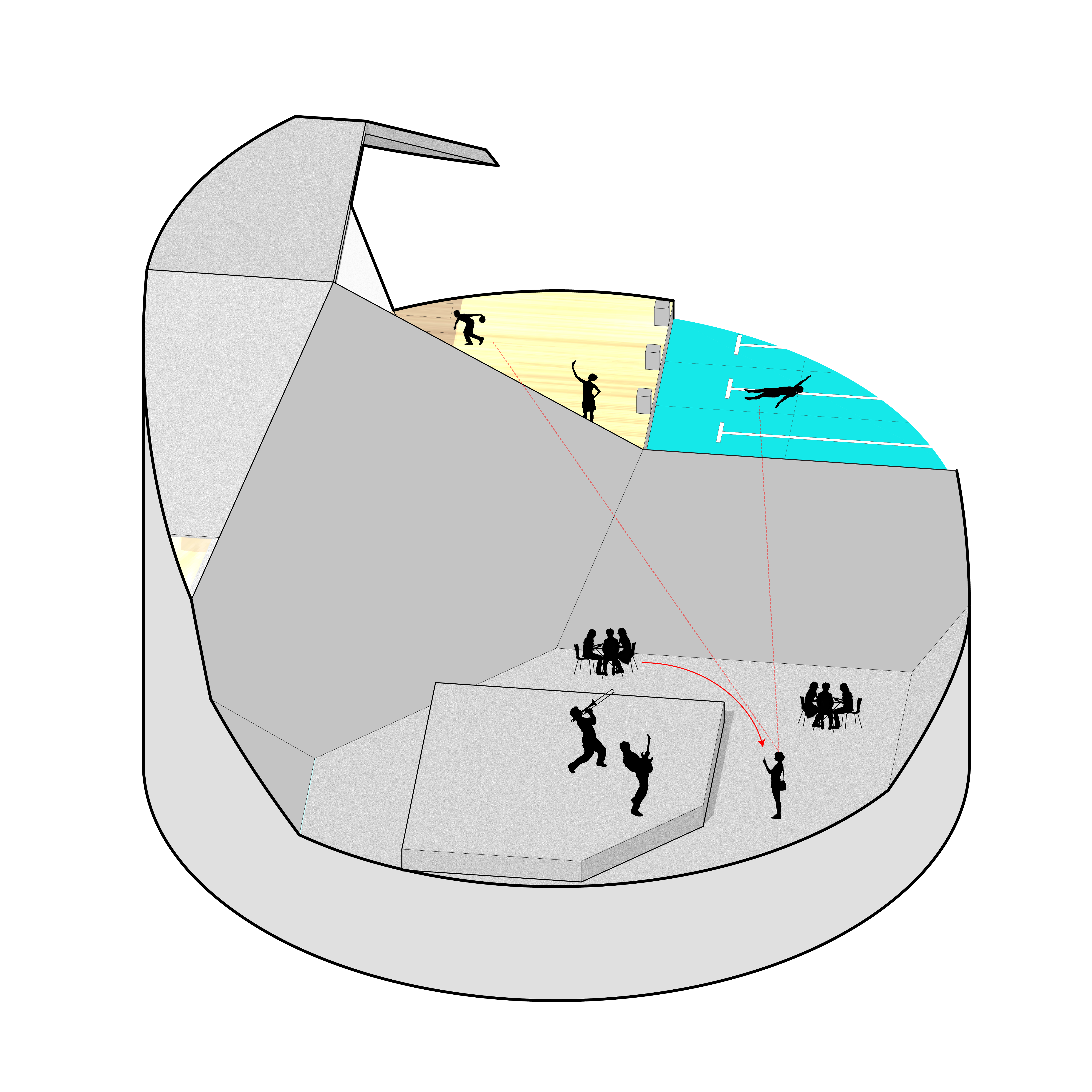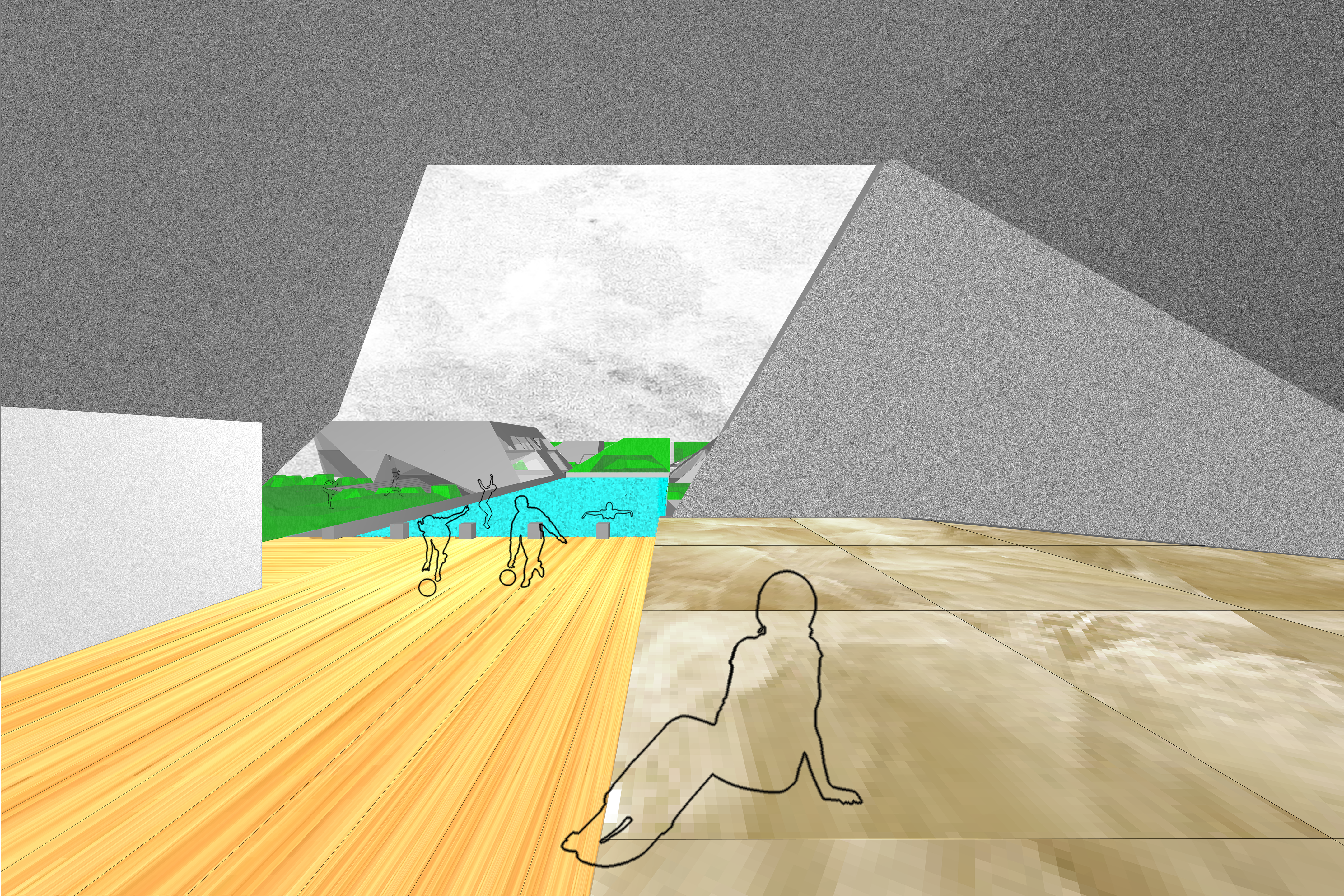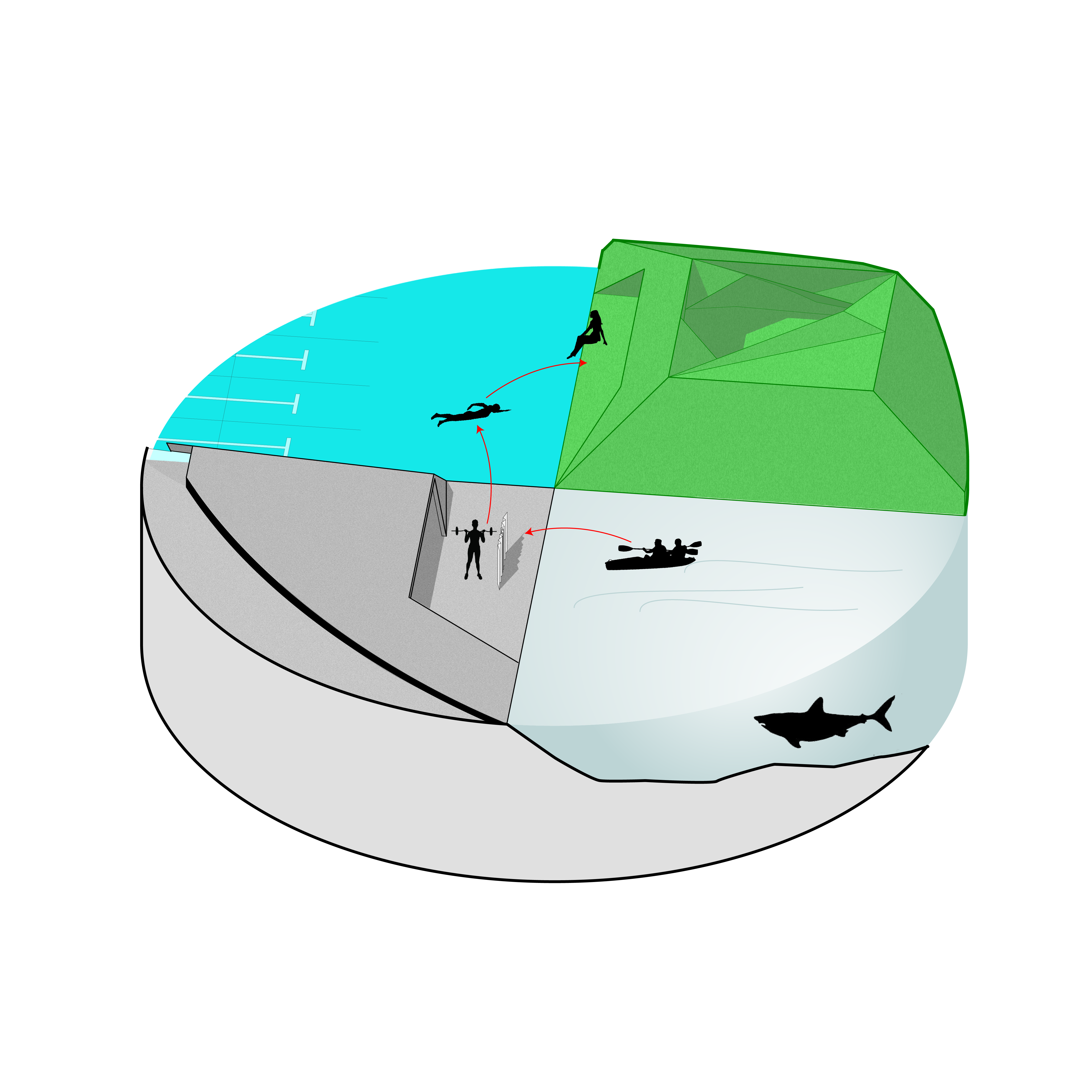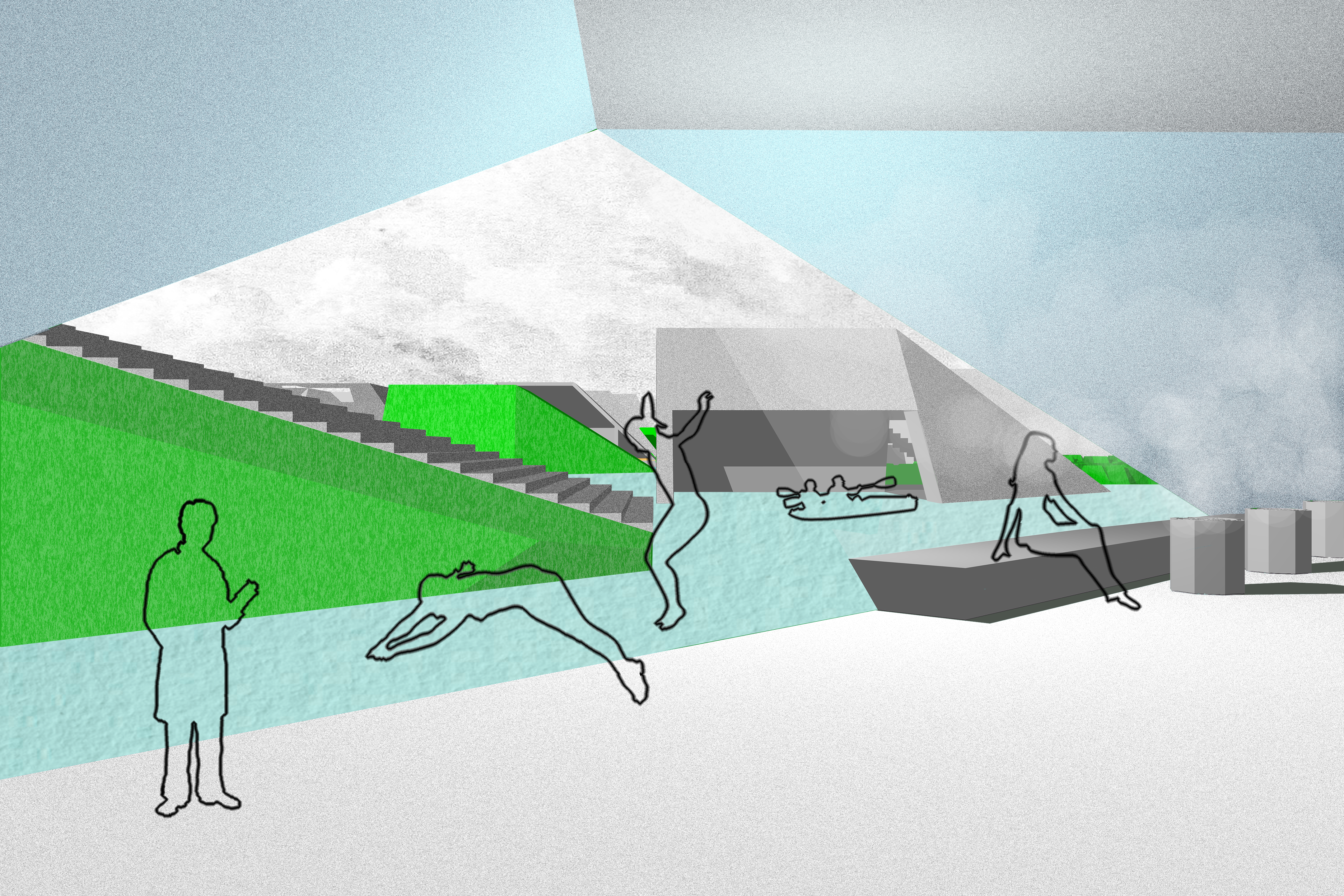Premise: Virtual communities and digital services inform a new speed of living, becoming the new placeless venues of communication, interaction and exchange. Therefore:
1. Work and play happen any time.
2. Community is everywhere - both location-specific and ubiquitous.
In the new digitally-expedient paradigm, architecture remains too slow to act and must therefore be equally as spontaneous to accommodate spontaneity.
The design for an urban community center on the south side of Chicago addresses the influence of digital media, services and devices on existing notions of wellness, leisure and community. Hypershore is an architectural response - an interface - appropriately conceived as a type of logical questionnaire related to each specific visitor's wellness. What does wellness mean? What are some possible solutions? How does wellness relate to the technological paradigm? How do these answers become architecture? How does this architecture become urban? How does the Hypershore respond?
The Hypershore is a strategy for architecturally clashing social dynamics and a platform for socially-oriented wellness. This is accomplished through multi-functional spaces and programmatic mash-ups or adjacencies. Its mission is to productively leverage the frenetic pace and time-sucking, attention-grabbing pull of digital media through programmatic collisions.
The Hypershore mitigates the built-in contradiction of internet socializing; i.e. greater communicative potential within physical dislocation or the tendency to become more transparent (open) behind a screen due in part to the elimination of physical presence. The Interface subversively alleviates physical tension by easing its subjects into an urban environment that collides disparate social groups under the guise of wellness and leisure. Architecture becomes an interface to the city, activity, people, and wellness.
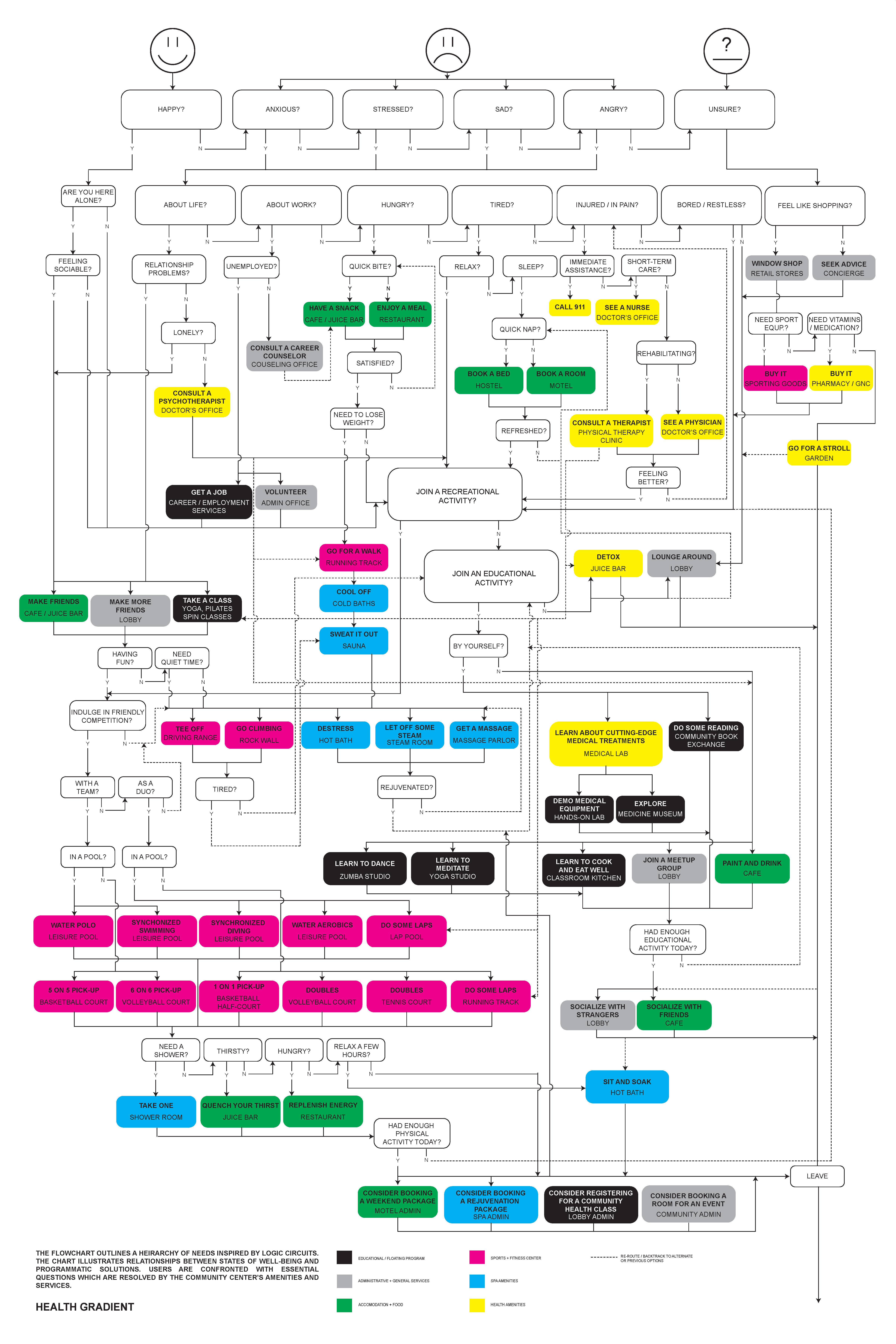
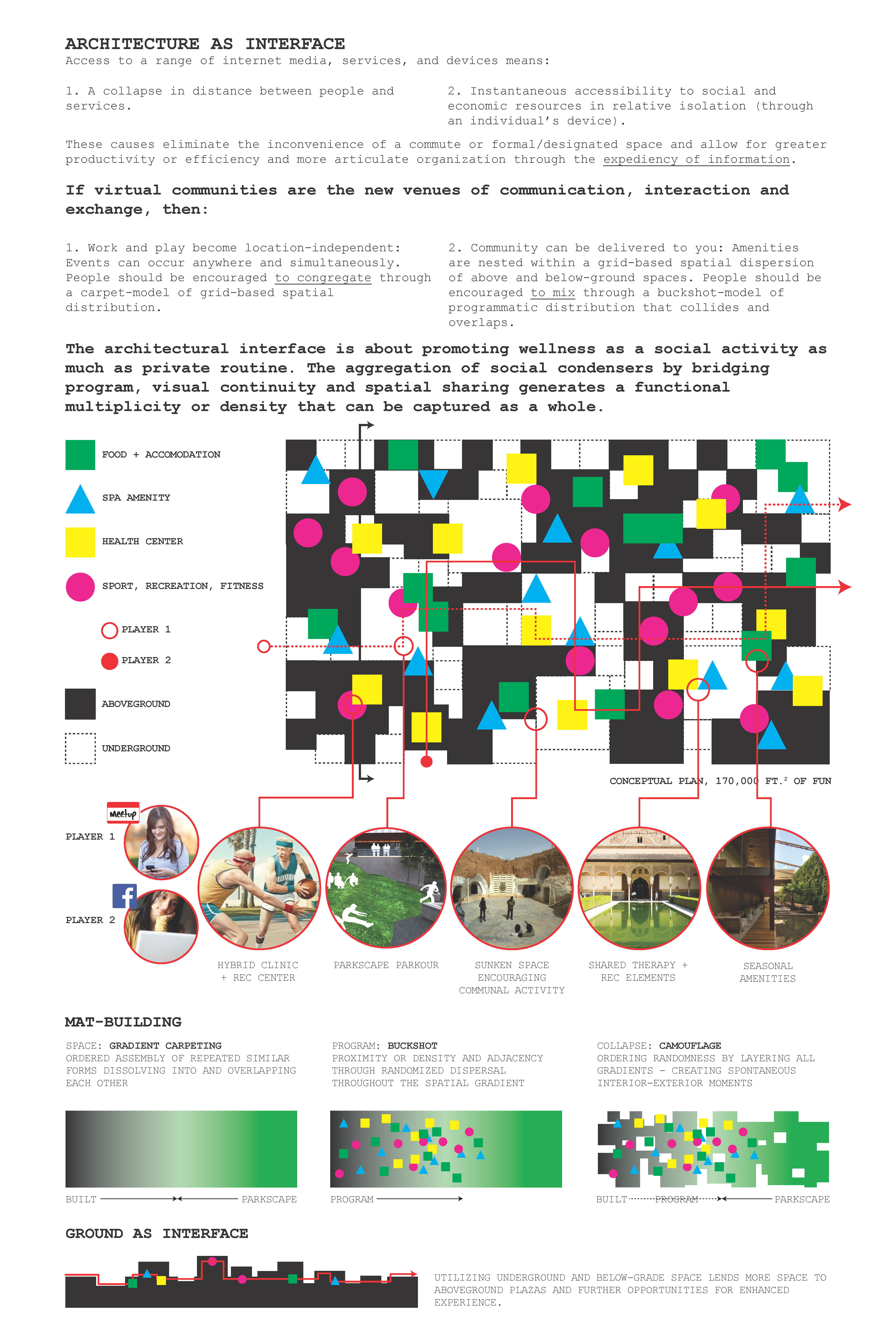
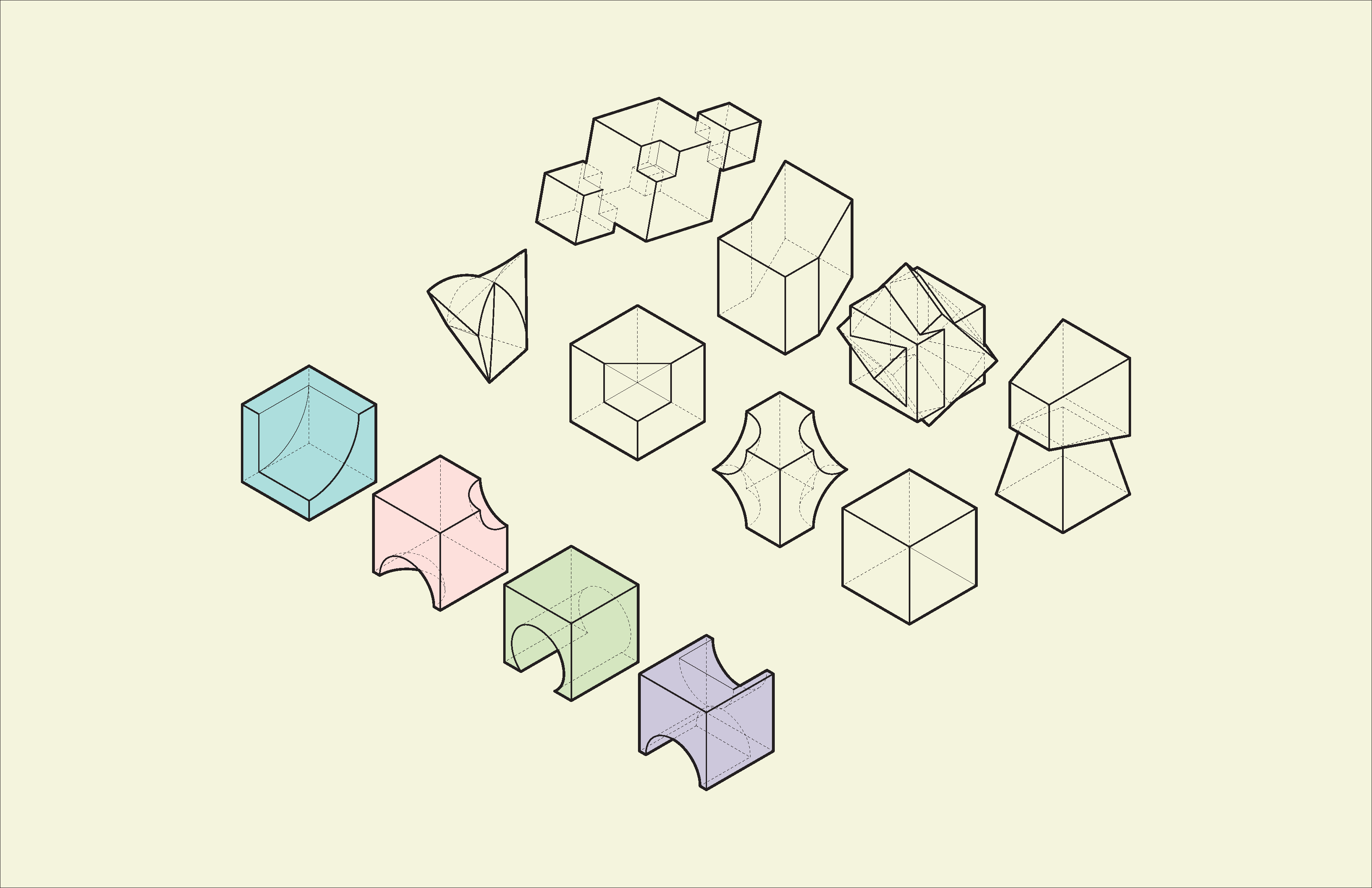


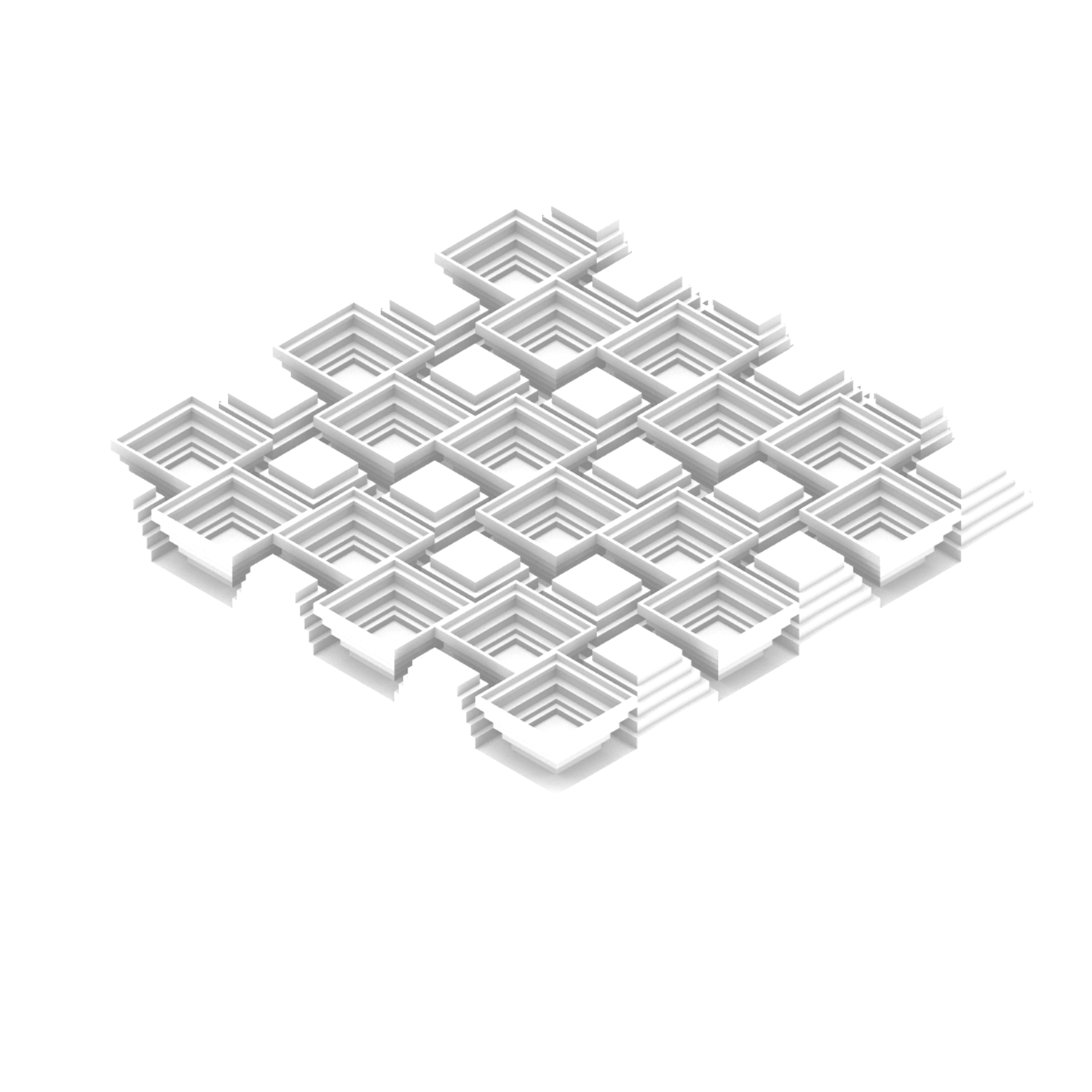
Mat-building can be said to epitomise the anonymous collective, where the functions come to enrich the fabric, and the individual gains new freedoms of action through a new and shuffled order, based on interconnection, close-knit patterns of association, and possibilities for growth, diminution and change. Smithson



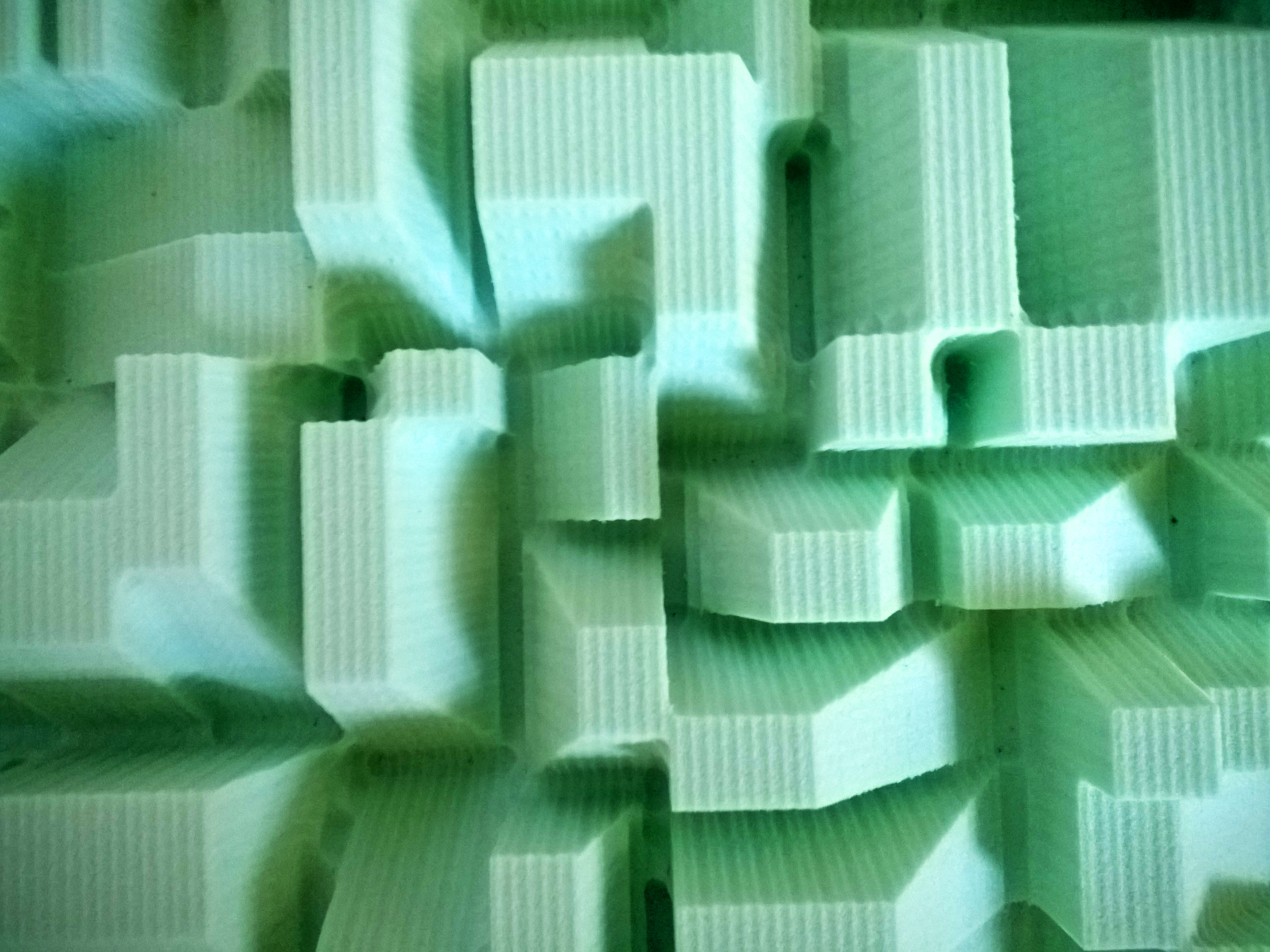


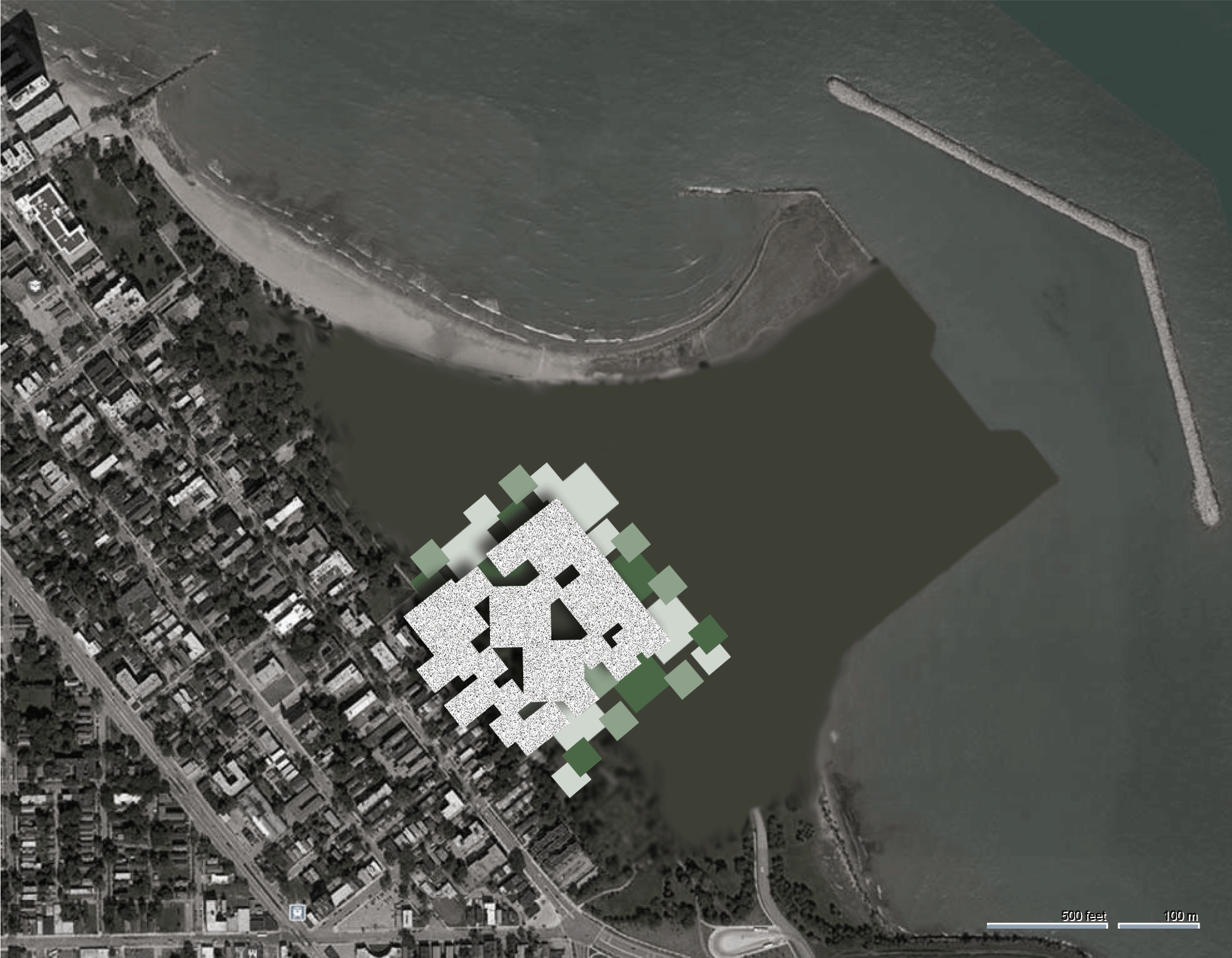
Architecture was seen as the combination of spaces, events, and movements without any hierarchy or precedence among these concepts… [a way of generating] non-hierarchical relationships, program, and an unlikely combination of events. Tschumi
The Hypershore fosters wellness as a social activity by aggregating social condensers - programmatically categorized into modes of access: shared, semi-public, direct, and indirect. These social condensers both delineate and blur lines between spaces and programs, privacy and publicity. The result is a lengthy parkscape - collapsing space and program via a multi-functional urban carpet. Truncated pyramids, reminscent of Mayan temples and how they shaped urban interiors, organize built area, earth-shelters and small hills. Program is a non-hierarchically distributed across the scape - creating a merging gradient of interrelated form, program. Heterogeneity via homogeneous mass.
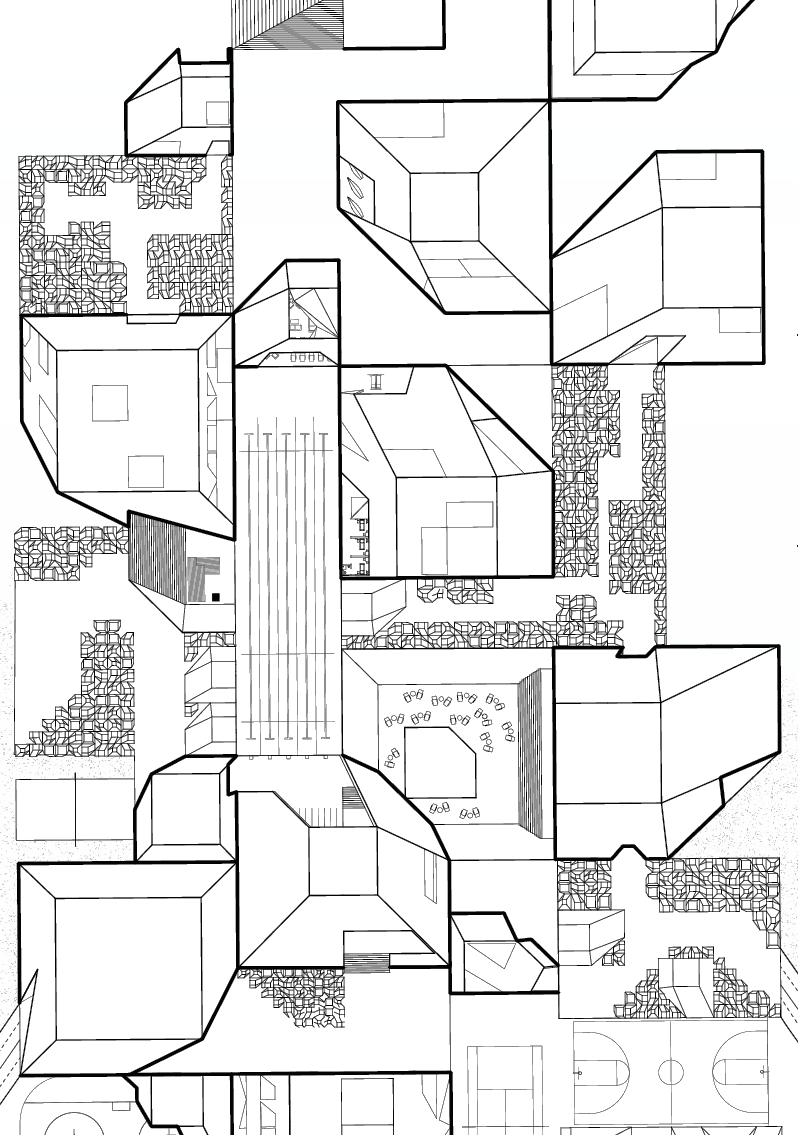
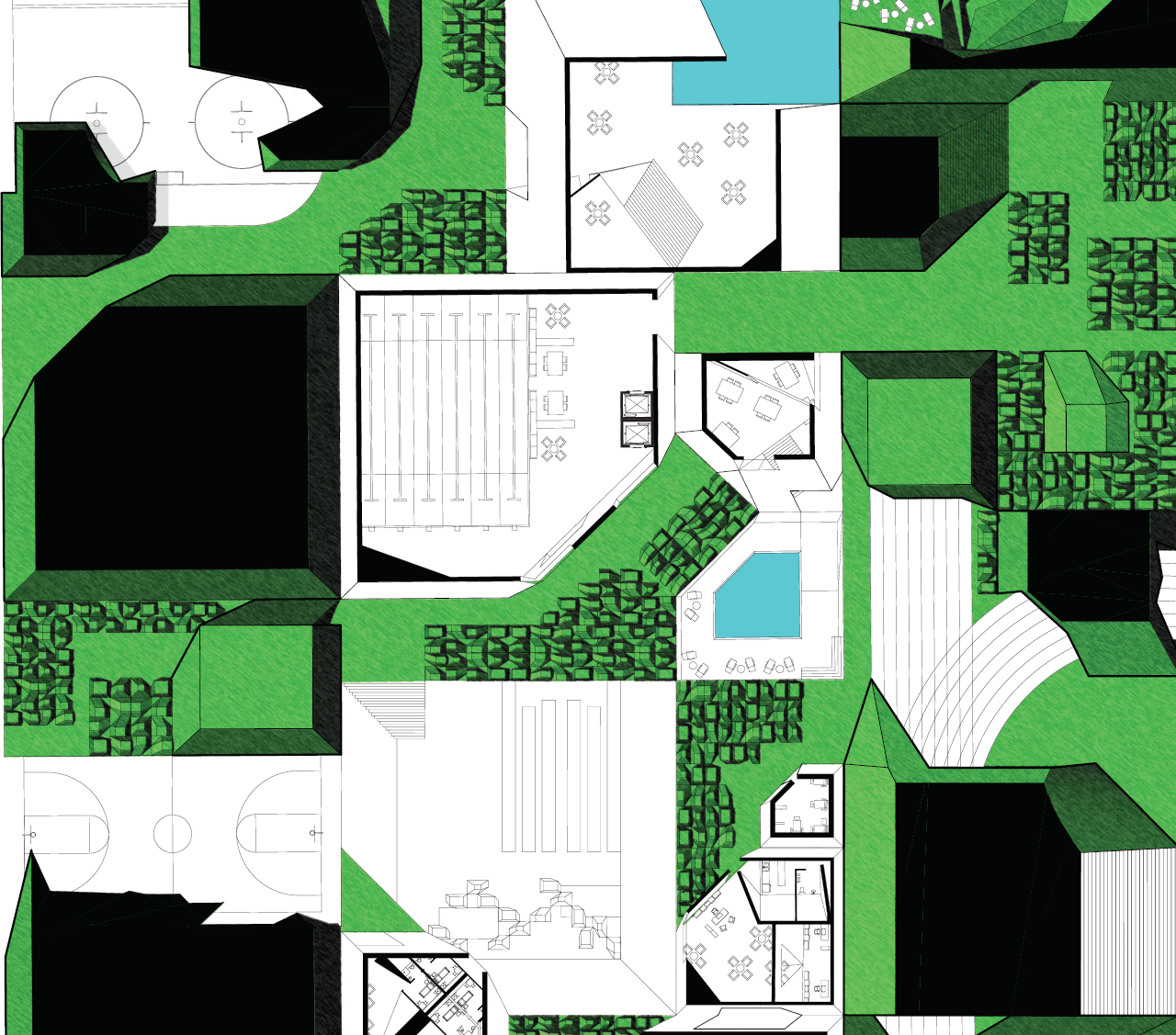
...Programmatic layering upon vacant terrain to encourage dynamic coexistence of activities and to generate through their interference, unprecedented events. Koolhaas


